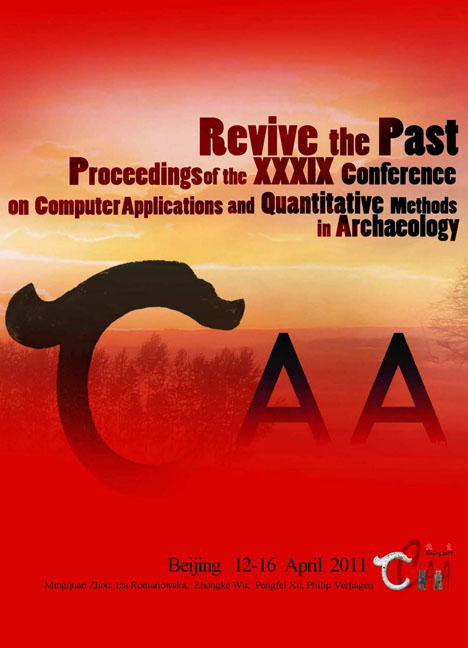 Revive the Past
Revive the Past Network Computing for Archaeology: a Case Study from the ‘Replacement of Neanderthals by Modern Humans’ Database Project
Published online by Cambridge University Press: 23 June 2021
Summary
Abstract:
The archaeology team of the ‘Replacement of Neanderthals by Modern Humans’ project is collecting geospatial and archaeological information on the palaeoanthropological sites dated between 200 and 20 kya in order to visualise the spatio-temporal process of the ‘replacement’ event in a higher resolution than before. To cover the wide and diverse geographical ranges from Africa to Eurasia, seven archaeologists from six institutions are collaboratively editing a client-server relational database (Neander DB) through the high-speed Internet. From the technical point of view, the features of the Neander DB are: 1) network computing, 2) large-scale data mining, and 3) systematic integration of bibliographical database, knowledge base (wiki), and geographical information systems. Such an integrated knowledge system has the potential to discover unknown environmental and archaeological factors that differentiate the ecological niches and behavioural strategies of the two human species.
Key Words:
Network Computing, Relational Database Management System (RDBMS), Large-Scale Data Mining, Lithic Industry Wiki, System Integration
Introduction
Computer-based databases for archaeology have continuously been developed since the earliest applications in the 1980s (Ozawa 1985; Richards and Ryan 1985). It is noteworthy that the CAA 1991 were characterised by the papers associated with SQL-compliant relational database management systems (RDBMS) (Cheetham 1992; Ryan 1992) and the bibliographical database for archaeology (Heyworth 1992). Since the mid-1990s, geographical information systems (GIS) have increasingly been incorporated into archaeological database projects (Lock 2000; Yokoyama and Chiba 1997). Using these systems, database technologies further developed and diversified during the first decade of the twentyfirst century. The implementation includes: 1) clearing houses to aggregate different online data sources and database systems (Usui et al. 2000), 2) autonomous decentralised Internet GIS (Mori 2011), 3) archaeology-specific search engine (Miura and Ozawa 2000), and 4) object-oriented database schema (Conolly and Lake 1996,55; Lock 2003,89–90) using XML (eXtensible Markup Language) (Jordal et al. 2010), UML (Unified Modelling Language) (Usui et al. 2006), and standardised geospatial information (ISO 191xx series) (Fujimoto 2008).
Today, databases are widely employed in the field of archaeology right from local fieldwork and laboratory work to supra-regional cultural resource management.
- Type
- Chapter
- Information
- Revive the PastProceedings of the 39th Conference of Computer Applications and Quantitative Methods in Archaeology, pp. 217 - 226Publisher: Amsterdam University PressPrint publication year: 2012
- 1
- Cited by


